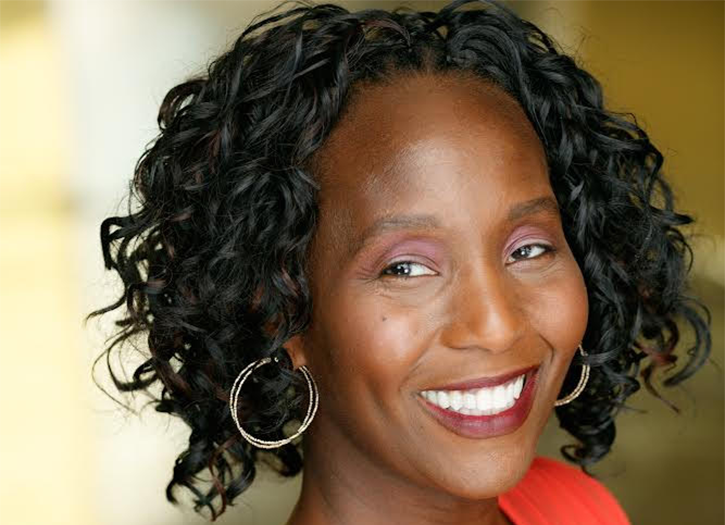I am a passionate supporter of equity in the workplace, and I channel my frustration around social justice issues into spaces I can actually impact.
Can you tell us more about Rework Work?
There is a reason we have always said that you have to work twice as hard to be considered half as good and the unfairness and inequity in that statement has always bothered me, so Rework Work came out of a frustrated rant when I was talking about all of the things that we need to change in the workplace. So while a lot of what we do in diversity, equity, and inclusion, has been caused by frustration, we use that frustration to create solutions.
What is DEI and what are some ways leaders should and should not approach DEI conversations?
DEI or diversity, equity, and inclusion are three concepts that make good leaders. Unfortunately, along with compassion and empathy, these concepts haven’t been instilled in leadership development programs so most don’t know how to tackle them. That results in leaders doing things like diving into tough conversations when they haven’t been given tools or guidance on how and when we’re surprised when it isn’t handled well. We hear over and over again that people don’t leave companies, they leave managers, and they leave managers because they are not appropriately equipped to do their jobs. Professional development is essential and leadership skills are not innate to most, they are learned. DEI needs to be taught. Yet leaders continually stress providing unconscious bias training to the greater employee population without a thought to their own, more crucial development.
How can employers help their employees of color feel valued in the workplace when they may not feel valued in the community?
Employers have control over their workplace they do not have control over their community. It would help if employers would recognize that fact. There is nothing more frustrating than working with leaders who look at me and say, what can I do? My answer is usually, anything you want because it’s your company. And so, to that end, it would make sense to ask their employees of color what would be helpful to them instead of guessing. One easy suggestion is workplace flexibility. Stop insisting that everyone come back to the office. It has been made very clear that we can all work quite effectively and efficiently without needing to be in the office every day. Studies have also shown that black employees in particular prefer to work remotely because they are subjected to fewer microaggressions and have an increased ability to manage their stress levels.
What is some way to address biases in the workplace?
You have to interrupt bias, which means you first have to acknowledge there is bias and then identify where your bias shows up for you before you can interrupt it. It’s very basic but that’s what we have to do – get back to basics and this requires us to remind ourselves when we’re making decisions that the decision needs to be objective. How do you make the decision objective? Use data, instead of gut feel. Use standard comparisons if you are deciding between person A and person B for a job interview, for a promotion, for a project lead, for whatever. Decide to interrupt it, create a plan for doing it, then repeat.
How can workplace bias impact your bank account + business growth and what to do about it?
This seems to be a question about the business case for diversity and at this point, companies really should be aware of the vast numbers of studies that have been done that make this point. Studies show that paying attention to issues of diversity, equity and inclusion not only improves workplace productivity, creativity, profit, retention, and overall workplace engagement, but also a focus on DEI decreases instances of sexual harassment, turnover, workplace bullying, absenteeism, and more. Any one of these outcomes would be spectacular for a business so why don’t company leaders actually work to fix this? My experience shows there is an irrational fear that improving working conditions for the many will reduce opportunities for the few (the leaders) and they put their own self-interests above those of their employees. The frustrating thing about that is they are incorrect in their fear and so everyone loses.
What are some steps to reduce biases against women, such bring awareness, alignment, action, and advocacy?
The framework that I use to guide companies in improving inclusion in the workplace is a change management framework that begins with awareness. Many people want to jump into action, but you can’t create effective action or long-lasting action when you don’t know why you’re creating programs or who you’re doing it for. Without awareness, which can include surveys, and focus groups – simply listening to your employees, any action will continue to be performative.
You are also an author, can you tell us about your book, “Unbias: Addressing Unconscious Bias at Work,” and why you decided to write it?
Unconscious bias is real and there are people who want to deny it exists. Yet as much as I’d like to eradicate bias, you can’t. So, I was a little concerned about naming the book Unbias because I thought people may think that is what I was trying to say – that you can accomplish the eradication of bias. But to me, Unbias is about being aware of your unconscious biases, taking the time to identify where and when they show up for you, and then choosing to behave differently so that the impact you have is no longer negative, but positive, or at least neutral.
What advice can you provide to individuals of color that have experienced racial bias in the workplace to handle it while moving forward?
In my book, I provide the guideline of P.A.U.S.E. It’s an acronym for handling microaggressions but what I find to be most helpful is the idea that we can pause at all. When we are confronted with a situation that we don’t know how to deal with, we rush to answer, or we ignore it. PAUSE allows space to reflect and come back with a calm and rational reaction while still letting the offending party know they have offended. It allows us to not let the person off the hook and not beat ourselves up for leaving the situation unaddressed.
How can people connect with you?
I’m on LinkedIn as Stacey Gordon, but you can also join our community at learn.reworkwork.com where we distribute all of my content which includes blogs and free resources as well as professional development options.







Add Comment
You must be logged in to post a comment.